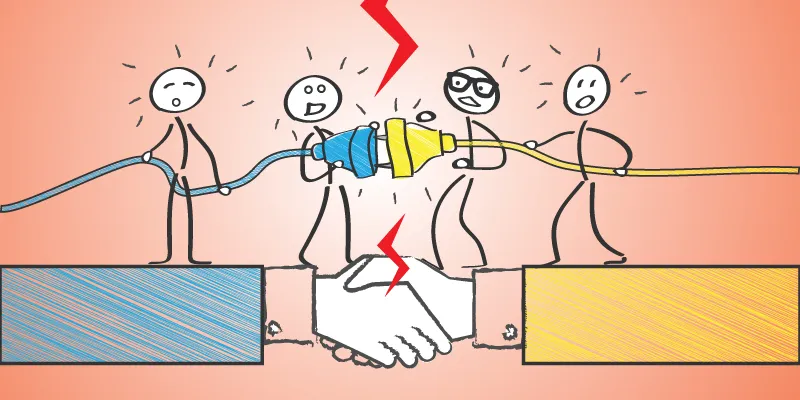Why these global mergers and acquisitions fell apart
It has been four weeks since Microsoft announced its acquisition of LinkedIn for $26.2 billion. The problem, however, is that Microsoft has so far struggled to integrate at least four of its acquisitions in the past. This problem is not just with Microsoft, even other companies struggle to handle mergers. Most of the time mergers and acquisitions end up in write offs. According to consulting company MergerMarket, there was $4.28 trillion worth of M&A deals last year. About 45 percent of those deals came from the USA. This number is the highest since 2007. “You acquire companies for their strategic value. It could be the technology or the people or the market that it operates in. Integrating companies and keeping shareholder value up is always the challenge for any CEO,” says Mohandas Pai, Founder of Aarin Capital.

Here is why some M&A’s did not work
AOL-Time Warner: The $164 billion deal was thought to be the best thing that happened to the internet world in 2000. Guess what? Within a few months, the dotcom bubble had eroded shareholder value 10 times from $226 billion to $20 billion. Advertising revenues of AOL dropped overnight. But that did not stop the next big tide from wiping out the merger.
The managements did not anticipate for something called broadband
AOL was set for a dial-up world and did not realise that broadband, whose penetration was less than five percent of the country, in 2000, would in a couple of years become the main platform for consumers to consume the internet.
HP-Compaq: In 2002, the merger made HP the largest PC manufacturer in the world and in an all-stock deal - worth $24 billion - it made sense at the time that they were. But the company began to face trouble right from the start because the PC business of Compaq began to destroy the value of HP’s valuable printer business at the time. More importantly, the PC business became a commoditised business and eroded net profits.
Lack of a clear understanding between handling a commoditised business versus handling a valuable business led the management to be split in decision making.
The servers, managed services business and PC market came to be dominated by IBM and Dell. HP now continues to streamline its businesses to stay relevant.
Tata Steel-Corus: When Tata Steel went ahead and bought UK’s Corus Steel for $12 billion, the global demand for steel was at an all-time high. In less than a year, the global recession brought capacities down and the acquisition was becoming a nightmare. Tata Steel began to sell away pieces of the business. The problem was that of mounting debt, poor integration of the management – from Corus – and muted global market for the company.
Analysts estimate that $5 billion was lost since 2010. The company is also subject to competition from Chinese firms who have brought steel prices down.
Quaker-Snapple: In 1994 when Quaker Oats and the Snapple Beverage Corp merged for $1.7 billion, it almost seemed like a merger that could take on giants like Pepsi and Coke. But in 25 months, Snapple lost $950 million in trying to integrate Snapple. Again the reason for the failure was to figure out whether the alternate drinks category could succeed in retail chains or in convenience stores.
Mergers fail because....
- Low commitment of both management teams.
- Believing that the market is right for a product.
- Leaders want to prove that they can grow by merging entities.
- Being misled that two different cultures can actually work together after a merger.
- When the management destroys the other product’s value in the market.
- The merged companies are not able to tap the potential of their products.
“Megers are very delicate to handle. If they work, people like you, if not, shareholders do not like you,” says Ratan Tata, Chairman Emeritus of the Tata Group, at the side lines of a press conference.
So Microsoft knows first-hand that acquisitions fail. It must remember its Nokia acquisition ($9.5 billion) all too well. Will the LinkedIn acquisition work? At least it will give it the much-needed professional social media network (with insights, education, job search, recruitment, and co-worker tools) to cross sell Office 365. Only time will tell. Until then let us hope it becomes successful.







![[Weekly funding roundup Jan 4-10] VC inflow shows steady rise](https://images.yourstory.com/cs/2/220356402d6d11e9aa979329348d4c3e/funding-lead-image-1669386008401.jpg?mode=crop&crop=faces&ar=1%3A1&format=auto&w=1920&q=75)